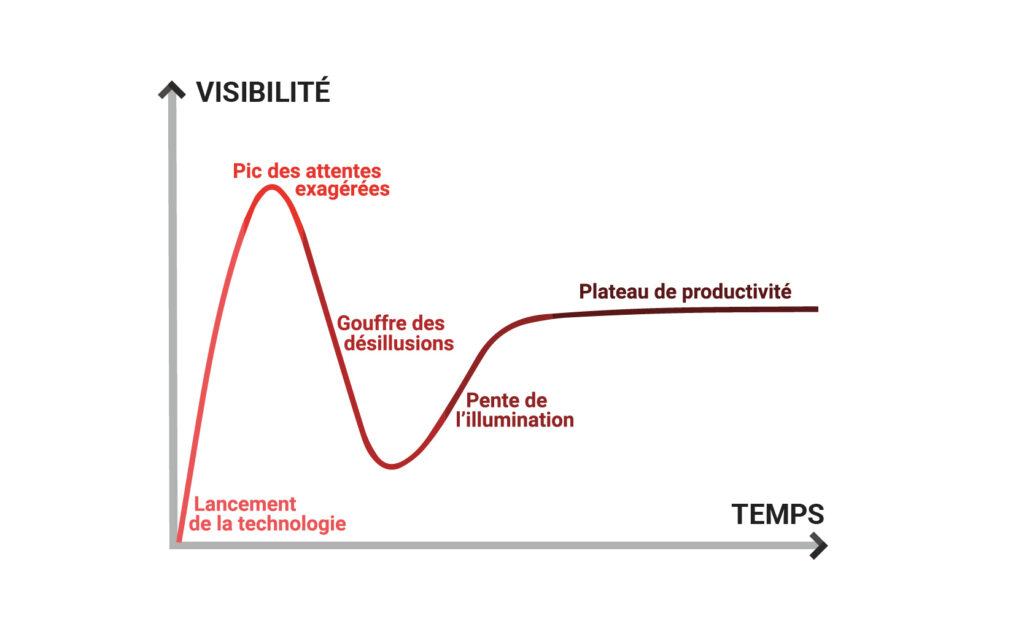In the race to innovate, how do you spot the projects of the future?
The race to innovate wasn’t always on. In today’s world, offering an existing product is no longer enough to gain a foothold in a market. On the other hand, just a few years ago, offering locally a product that was already available elsewhere was viable. It was a way of meeting demand. Now, thanks to globalisation, it is increasingly difficult to fill a gap when we can trade with the rest of the world.
It is in this context that companies have tried to stand out through their innovations. Rather than responding to a need, the idea is to create it. Significant changes have to be made to existing products in order to stand out from the crowd.
We can cite a few examples of companies that have created a need by innovating, such as Steve Jobs with the IPhone, or Blablacar with the democratisation of car sharing. Before Blablacar’s existence, alternatives to train travel were rare and often much more expensive. Blablacar was able to offer a service that did not exist before. Without talking about money, 25 million travellers a quarter use their site.
The race for innovation, not just success stories
The race to innovate is synonymous with disruption. However, consumers like their habits and mentalities are difficult to change. We call this resistance to change. So it’s common for new projects not to generate much interest straight away. We’re going to talk about an example that younger people will discover.
In 1978, Laser Disc was launched to compete with VHS. This was a disc with a diameter roughly similar to that of a 33rpm disc, containing a film. It was the first optical medium. With the possibility of adding chapters and its much higher quality, it had everything it took to replace the famous video cassette. But that wasn’t enough – quality isn’t everything. The ability to record on VHS was a big plus to which consumers were accustomed. The time available on Laser Discs was only 1 hour maximum per side, unlike video K7s which could easily exceed 4 hours. At the time of its launch, the press was optimistic. It was heralded as the ideal medium for film buffs. In the end, it lasted around ten years before disappearing into oblivion. But what conclusions can we draw from this failure?
Success or failure? It’s all a question of taking a step back
First of all, it’s not really a failure. It was the first step in optical reader technology. Like all innovations, it followed the ‘hype cycle’. Let’s take a closer look!

When a new technology is launched, enthusiasm often takes off very quickly. This is the case with our optical drive. In its early days, it was acclaimed by many consumers and professionals alike, along with Laser Disc. It was the height of exaggerated expectations. The media seized on the subject, and expressed immense expectations. Companies were set up, and all of them threw themselves into the innovation race. We all remember the expectations surrounding 3D printers in their early days.
Once the euphoria had died down, we entered the disillusionment phase. It was the end of Laser Disc, and optical reading would not work. The technology had a hard time selling and did not fully satisfy customers. Brands stopped making the product as it was, and the bottom fell out of the market. And that’s when the technology that nobody expects any more, and that seems to disappoint everyone, can bounce back.
This is the beginning of the illumination slope. Manufacturers are looking at possible improvements based on past mistakes. This was the birth of more sophisticated and reliable products. To stay with optical reading, it was only 4 years later that the CD as we know it came out. A revolutionary innovation for all audiophiles and audio entertainment professionals.
Finally, the productivity plateau. It is generally at this stage of the hype cycle that companies make their race to innovate profitable. It’s the democratisation of technology. It’s accessible, reliable and anyone can use it.
How do you identify future projects?
Innovative technologies generally follow this curve. Some, in the worst cases, will never recover from the abyss of disillusionment. Google Glass comes to mind. Although they were much talked about, there was never any real craze for this technology. It remained anecdotal.
The first rule for recognising the innovations of the future from others is to know this curve. This will enable you to place the technology in question on it and see whether it fits the pattern. The second thing is absolutely essential. Just because everyone is talking about a new process doesn’t mean it will necessarily work. This is the very demonstration of the hype cycle.
In this race for innovation, not all companies are moving forward at the same speed. Some move faster than others. You will notice that there is no time scale on the curve. Some techniques can be technically outdated before they reach the productivity plateau. These technologies quickly fall into oblivion, such as the DVD camcorder, which was overtaken by its memory-card competitors soon after its release. Another tip is to keep an eye on other innovative products that could be developed more quickly.
To conclude this race for innovation
In all cases, only patience will show us which innovations stand out from the crowd. Common sense remains our best friend. We should also bear in mind that we can have an impact on the rankings in the innovation race. The people involved in the projects are the driving force behind their development, but the interested parties and investors are just as important. Take the example of IOT (Internet Of Things). There’s a lot of talk about them at the moment, and they enable a lot of things to be connected. Nobody will be surprised to see a connected fridge these days. The real added value is not yet obvious. However, the uses of IOT are developing, particularly in industry, where the gains are real. Data is still often collected using paper and pencil. This results in average reliability and time-consuming tasks. This is the slope of enlightenment.
Bear this in mind: if you want an innovation to succeed, support it however you can. If you see yourself as a customer, buy it. If you’re an interested party, talk about it. And if you can, invest!




0 Comments